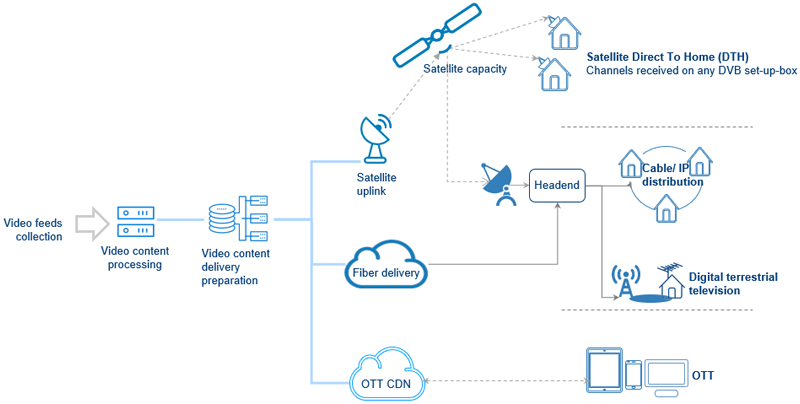What Does Apollo Group Tv Do?
What Does Apollo Group Tv Do?
Blog Article
The Only Guide for Apollo Group Tv
Table of ContentsThe Best Strategy To Use For Apollo Group TvApollo Group Tv Fundamentals ExplainedThe Of Apollo Group TvEverything about Apollo Group Tv
In this situation, as opposed to having three-minute commercial places during a 30-minute tv program, TV programming may change to one where a consumer will be required to have a monthly subscription, so that they cen sight targeted banner advertisements. This kind of advertising currently happens on the net, and the quantity of data tv business accumulate permits them to do similar.Define the significant patterns amongst the broadcasting and cable networks. Popular radio shows such as cops drama Dragnet and western cowboy collection Gunsmoke were adjusted for television, and new Television shows were sponsored by solitary marketers, just as radio programs had actually been.
Today, the tv industry is even more complex. Programs are funded by numerous marketers; programs is managed by significant media conglomerates; and the 3 significant networks no more dominate the airwaves however instead share their customers with countless wire channels. Several elements represent these patterns within the industry, including technological growths, federal government policies, and the creation of brand-new networks.

Fascination About Apollo Group Tv
Developed in 1969, (PBS) created out of a report by the Carnegie Commission on Educational Television, which analyzed the role of instructional, noncommercial television on culture. Public television was also meant to provide universal access to television for audiences in rural locations or visitors that could not pay for to pay for exclusive television solutions.
The period in between 1950 and 1970 is traditionally acknowledged as the. Besides a small section of airtime controlled by public tv, the three major networks (called the Big 3) controlled the tv market, jointly accounting for more than 95 percent of prime-time watching. In 1986, Rupert Murdoch, the head of international company Information Corp, released the Fox network, testing the dominance of the Big 3.
Targeting young and minority audiences with shows such as Buffy the Vampire Killer, Moesha, Dawson's Creek, and The Wayans Bros., the brand-new networks wished to attract terminals away from their old network affiliations. Nevertheless, as opposed to repeating the success of Fox, UPN and WB had a hard time to make an effect. Unable to draw in many associate stations, the 2 new networks got to fewer houses than their bigger rivals because they were impossible in some smaller sized cities.
This decision led the way for the advancement of cable television motion picture networks, adding to the rapid development of cord in the 1980s and 1990s. apollo group tv. Further deregulation of cable television in the 1984 Cord Communications Plan Act eliminated constraints on see here now cable rates, enabling operators to bill what they desired for wire services as long as there was reliable competition to the solution (a criterion that over 90 percent of all wire markets might meet)
The 4-Minute Rule for Apollo Group Tv

Having actually created the first "superstation," Turner increased his realm by starting 24-hour news network CNN in 1980. At the end of the year, 28 national programming solutions were readily available, and the wire revolution had actually begun. Over the next years, the sector underwent a period of quick development and popularity, and by 1994 viewers can pick from 94 fundamental and 20 costs cable television services.
Figure 9 - http://go.bubbl.us/e587da/99ba?/Apollo-Group-TV.16 Boosted competitors from cable channels has actually caused a constant decrease in the networks' target market rankings. During the 1950s, the price of generating a single television show increased as programs came to be longer and production costs soared. Sponsorship on network tv moved from solitary sponsorship, in which a program was completely sustained and created by one advertiser, to several sponsorship, in which advertisers bought 1- or 2-minute places on the show
Each feedback needs to be a minimum of one paragraph. Select among the Big 4 networks and publish out its weekly programs schedule. Enjoy the network's prime-time programs throughout a week, keeping in mind the target group for each and every show. Observe the advertising and marketing enrollers that sustain each show and contrast how the services and products fit with the designated audience.
The Main Principles Of Apollo Group Tv

Direct TV, often referred to as standard broadcast TV, incorporates cord and satellite television. It's called "direct" since material complies with a fixed programs timetable, unlike on-demand web content which the specific customer chooses to enjoy based upon their own choices and timetable. So, when you ask, "What is linear TV?", think about it as the classic method of seeing television that has been around for years.
Report this page